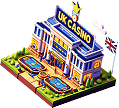Developing a Loyalty Program that Scales with Your Business
In today’s competitive market, building and maintaining customer loyalty is essential for sustained business growth. A well-designed loyalty program not only rewards repeat customers but also fosters a deeper connection between your brand and its audience.
As your business expands, it’s crucial to have a loyalty program that can scale alongside your growth. This ensures that the program remains effective, engaging, and beneficial for both your customers and your business operations.
In this article, we will explore the key elements of developing a scalable loyalty program, providing actionable insights to help your business thrive.
Introduction to Loyalty Programs
Loyalty programs are structured marketing strategies designed to encourage customers to continue buying from a specific business. They provide incentives, such as discounts, rewards, or exclusive offers, to reward repeat purchases and foster long-term relationships.
Understanding the fundamentals of loyalty programs is the first step in creating one that can grow with your business. It’s important to align the program with your brand values and customer expectations.
Effective loyalty programs go beyond simple reward schemes; they create meaningful interactions that enhance the overall customer experience.
Benefits of a Scalable Loyalty Program
A scalable loyalty program offers numerous advantages that can significantly impact your business’s success. Here are some key benefits:
- Enhanced Customer Retention: Rewarding customers for their loyalty encourages them to stay engaged with your brand.
- Increased Sales: Loyal customers are more likely to make repeat purchases, boosting your revenue.
- Customer Insights: Tracking loyalty program data provides valuable insights into customer behavior and preferences.
- Brand Advocacy: Satisfied, loyal customers are more likely to recommend your business to others.
These benefits contribute to a stronger, more resilient business capable of withstanding market fluctuations.
Key Components of an Effective Loyalty Program
To develop a loyalty program that scales with your business, it’s essential to incorporate several key components:
- Clear Objectives: Define what you aim to achieve with your loyalty program, whether it’s increased sales, improved customer retention, or enhanced brand awareness.
- Customer Segmentation: Understand different customer groups and tailor rewards to meet their specific needs and preferences.
- Reward Structure: Design a reward system that is both appealing to customers and sustainable for your business.
- Technology Integration: Utilize technology to manage and track the program efficiently.
- Continuous Engagement: Keep the program dynamic with regular updates, new rewards, and ongoing communication.
Each of these components plays a vital role in ensuring the loyalty program remains effective as your business grows.
Steps to Develop a Scalable Loyalty Program
Developing a scalable loyalty program involves several strategic steps:
1. Define Your Goals
Start by establishing clear goals for your loyalty program. Determine what you want to achieve, such as increasing repeat purchases, enhancing customer engagement, or collecting valuable customer data.
2. Understand Your Customers
Conduct market research to gain insights into your customers’ preferences, behaviors, and motivations. This information will help you design a program that resonates with your audience.
3. Choose the Right Reward Structure
Select a reward system that aligns with your business model and appeals to your customers. Options include points-based systems, tiered rewards, or cashback offers.
4. Implement the Necessary Technology
Invest in a robust loyalty program platform that can handle increased data and customer interactions as your business grows.
5. Launch and Promote Your Program
Effectively communicate the benefits of your loyalty program to your customers through various marketing channels to ensure a successful launch.
6. Monitor and Optimize
Regularly assess the performance of your loyalty program and make necessary adjustments to improve its effectiveness and scalability.
Technology and Tools for Scaling Loyalty Programs
As your business grows, the technology supporting your loyalty program becomes increasingly important. Here are some essential tools and technologies to consider:
- Loyalty Management Software: Platforms like Salesforce Loyalty Management and HubSpot Loyalty offer comprehensive solutions for managing and tracking loyalty programs.
- Customer Relationship Management (CRM) Systems: Integrate your loyalty program with CRM systems to leverage customer data for personalized marketing efforts.
- Analytics Tools: Use analytics to measure the effectiveness of your loyalty program and gain insights into customer behavior.
- Mobile Integration: Ensure your loyalty program is accessible on mobile devices to increase engagement and convenience for users.
Investing in the right technology ensures your loyalty program can handle increased demand and evolve with your business needs.
Measuring the Success of Your Loyalty Program
To ensure your loyalty program is effective and scalable, it’s crucial to measure its success through various metrics:
- Customer Retention Rate: Track how many customers continue to engage with your business over time.
- Redemption Rate: Measure how often customers are redeeming their rewards, indicating the program’s attractiveness.
- Customer Lifetime Value (CLV): Assess the total value a customer brings to your business over their entire relationship with you.
- Engagement Metrics: Monitor participation rates, active users, and interaction levels within the program.
Regularly analyzing these metrics helps you identify areas for improvement and ensure your loyalty program remains aligned with your business objectives.
Common Challenges and How to Overcome Them
Implementing a scalable loyalty program comes with its set of challenges. Here are some common obstacles and strategies to overcome them:
1. Balancing Cost and Value
Offering attractive rewards without compromising your budget is essential. Carefully plan your reward structure to balance customer satisfaction with financial sustainability.
2. Maintaining Customer Engagement
To keep customers engaged, regularly update your program with new rewards, exclusive offers, and personalized incentives.
3. Integrating with Existing Systems
Ensure seamless integration with your current CRM, POS, and marketing systems to streamline operations and data management.
4. Adapting to Changing Customer Preferences
Stay attuned to customer feedback and market trends to adapt your loyalty program accordingly, ensuring it remains relevant and appealing.
5. Ensuring Data Security
Protect customer data by implementing robust security measures and complying with data protection regulations to build trust and credibility.
Case Studies: Successful Scalable Loyalty Programs
Examining successful loyalty programs can provide valuable insights and inspiration for your own initiative. Here are a few examples:
Starbucks Rewards
Starbucks has built a highly successful loyalty program by offering personalized rewards, a user-friendly mobile app, and seamless integration with their payment systems. This approach has enabled them to scale effectively while maintaining high levels of customer satisfaction.
Amazon Prime
Amazon Prime combines various benefits, including free shipping, exclusive deals, and access to streaming services. This comprehensive approach has fostered strong customer loyalty and allowed the program to scale with Amazon’s expanding customer base.
Sephora Beauty Insider
Sephora’s Beauty Insider program offers tiered rewards, personalized recommendations, and exclusive events. By continually evolving the program based on customer feedback, Sephora has maintained a loyal and engaged customer community.
Future Trends in Loyalty Programs
As technology and consumer expectations evolve, loyalty programs must adapt to stay relevant. Here are some emerging trends:
- Personalization: Leveraging data analytics to offer highly personalized rewards and experiences.
- Gamification: Incorporating game-like elements to increase engagement and make the program more enjoyable.
- Omnichannel Integration: Providing a seamless experience across all customer touchpoints, including online and offline channels.
- Sustainability: Incorporating eco-friendly rewards and practices to appeal to environmentally conscious consumers.
- Blockchain Technology: Utilizing blockchain for secure and transparent reward tracking and transactions.
Staying ahead of these trends will help your loyalty program remain competitive and appealing to your customers.
Conclusion and Next Steps
Developing a loyalty program that scales with your business requires careful planning, the right technology, and a deep understanding of your customers. By focusing on the key components outlined in this article and staying adaptable to evolving trends, you can create a program that not only rewards your customers but also drives sustainable business growth.
Ready to elevate your customer loyalty strategy? Contact us today to start building a loyalty program tailored to your business needs.





